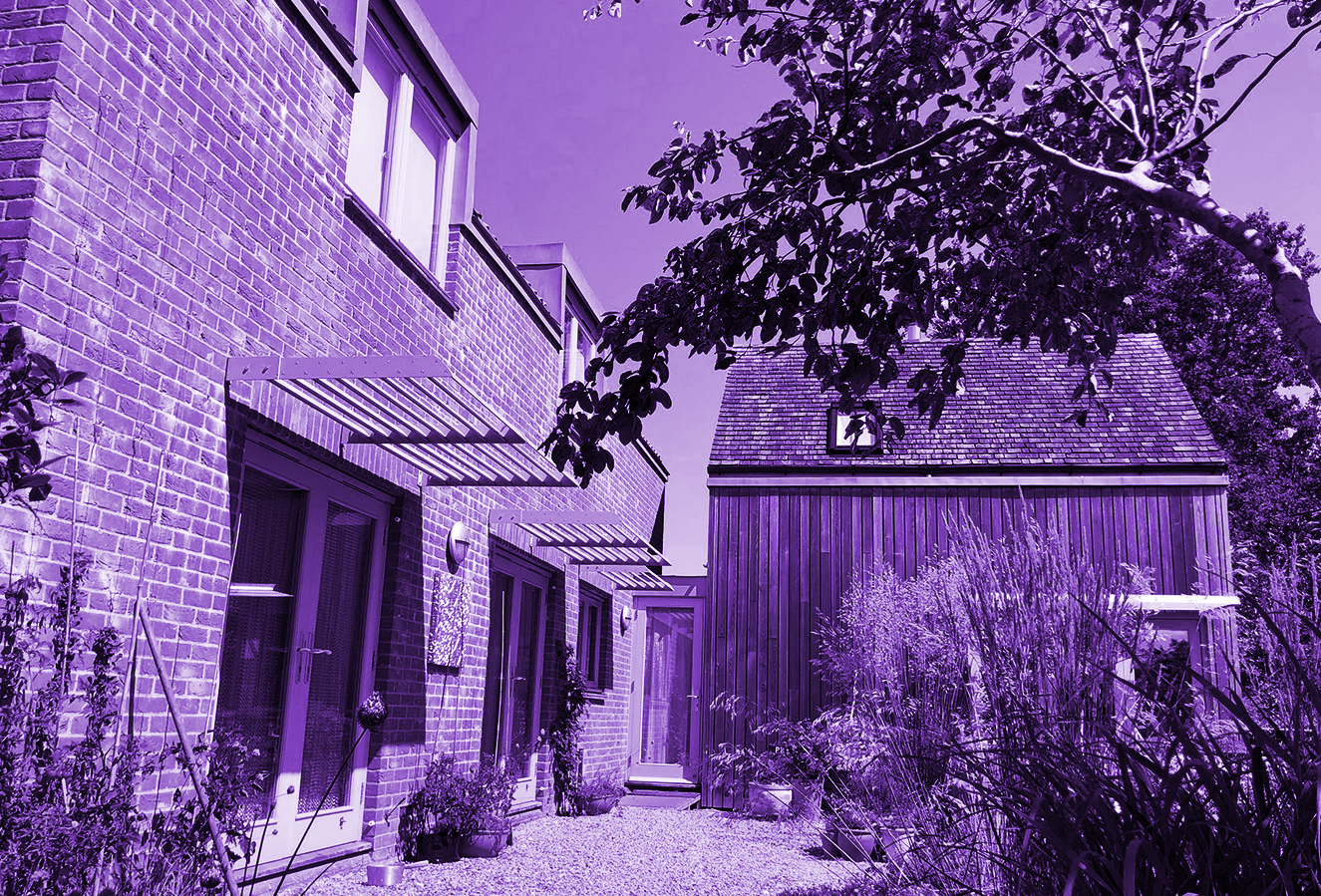
How to reduce overheating at home!
Overheating is not a typical complaint from homeowners in Europe or the UK, but you need to know how to reduce overheating at home. It is a growing concern, that homeowners, councils, and government bodies should be taking seriously. In Manchester specifically, we typically experience only a few weeks each year when cooling is needed, compared to around six months of heating demand. It’s no wonder that many people are reluctant to invest in expensive cooling systems. However, managing heat intelligently can improve living conditions, support productivity, and reduce the risk of serious harm to health.
Climate Change and the Rising Risk of Overheating
Despite the relative infrequency of overheating in the UK at present, rising temperature trends are expected to continue due to climate change. In 2022, a temperature of 40.3°C was recorded in Lincolnshire. Guidance from the World Heath Organisation (WHO) suggests for temperate zones such as the UK, temperatures above 24°C cause discomfort and, in the more fragile and susceptible members of the population, can cause harm (Ormandy and Ezratty, 2011). With global temperatures rising year on year and a 70% chance that the average temperature for the next 5 years will be more than 1.5 °C the last 5 years, we must be ready. The UK will experience significantly hotter and longer summers, increasing the risk of overheating in homes that were not designed to cope with such conditions. In fact, I wrote my master’s thesis 12 years ago on the imminent rise in summer temperatures and the housing sector’s lack of preparedness for the challenges this is likely to bring.
The Inverted pyramid below; created by RIBA and adapted from the GLA London plan. Is a cooling pyramid. Identifying the order in which people should undertake preventative interventions for overheating. We will be concentrating on limiting solar gain, which is accessible to all occupants.

An investigation on summer temperature conditions in 2020 highlights that there will be increases in summer temperature larger than the 2013 IPCC assessment. And in addition an increase in heat wave event per year. We shoudl expect more than 10 days in the near future.
Modern Homes: Insulation, Airtightness and the Overheating Challenge
Another contributing factor to rising indoor temperatures is our improved building standards. Better-insulated and more airtight homes are fantastic during the heating season, helping to retain warmth and reduce energy use. In 2002 airtightness regulations for housing were introduced as part of the Building Regulations, specifically Approved Document Part L. Here you can also see the insulation requirements for new and refurbished homes. However, these features introduced to save energy can become a disadvantage in warmer months, as they trap unwanted heat inside. The key, then, is to prevent excessive heat from entering in the first place, meaning less heat to trap. As of 2022, overheating was formally introduced into the Building Regulations for England under Approved Document Part O.
Solar Radiation: Free Winter Heat, Summer Risk.
Radiation is one of the three main ways heat is transferred, alongside conduction and convection. I’ve already discussed conduction and convection at length in previous blogs, particularly in the context of wall insulation, windows, and airtightness. However, radiation is often overlooked, perhaps because in winter, very little heat is lost through radiation. But when it comes to heat gain, the story is quite different.
In winter, this heat gain is extremely beneficial: passive solar gain helps to warm our homes, reduces heating demand, and works perfectly with highly insulated, airtight designs. In summer, however, it can quickly become uncomfortable and at worse a risk to health. Radiation is the dominant contributor to overheating in homes, almost entirely due to direct solar rays penetrating through windows. Consider the temperature difference you get in your own home, during summer. This is directly because for the solar radiation.
Window Direction Affects Overheating
During the summer months, the European continent tilts towards the sun. This results in longer days, a higher sun angle, and more intense solar radiation. Because we are in the Northern Hemisphere, the sun shines most strongly and for the longest time from the south, travelling from east to west throughout the day.
Managing Morning and Evening Heat
In the morning, east-facing windows receive direct sunlight. This can be pleasant but may become overpowering during peak summer. Because the sun is lower in the sky at this time, vertical shading is the most effective solution.
Similarly, in the evening, west-facing windows allow in the setting sun. While this is often welcomed, during periods of extreme heat it can contribute significantly to overheating. Again, vertical shading is well suited to block the low-angle rays.
There are many ways to achieve this, ranging from interior or exterior blinds to trees or nearby buildings that raise the effective horizon line for your windows. Regardless of which ingenious method you use, many examples are shared below. Dynamic shading always offers the advantage of being adaptable and allowing homeowner to adjust it as needed.
As mentioned previously, there are times of the year when solar radiation is beneficial for your home. Strategic shading helps you balance comfort and energy efficiency throughout the seasons.
Southern Sun Exposure
At midday, the sun is at its highest and shines from the south. This is when solar radiation carries the greatest energy. To protect south-facing windows during this time, horizontal shading is most effective. Overhangs can block high-angle sunlight while still allowing light in during winter. But the depth of that shading must be calculated for it to be optimal. Again, horizontal shading comes in many forms as can be seen below.
Shading Strategies for Windows
This diagram also taken from the RIBA shows all the window specific shading devises available.

Refer to the Shading for Housing guide by the RIBA for a technical breakdown of all the shading methods, including their pros and cons across several criteria such as cost, overheating mitigation, and ease of use.
In general it is useful to remember that dynamic external shading generally outperforms fixed external shading. And unfortunately for many households, internal shading is the least effective option. This is largely because solar radiation still penetrates the glazing before being blocked, meaning much of the heat has already entered the space. The performance of internal shading is therefore highly dependent on the emissivity and thermal properties of the glazing itself.
Alternative shading
There are alternative shading methods that consider the wider environment, beyond just the immediate window area. Planting, for instance, needn’t be limited to vegetation directly outside the window. Trees positioned further away from the building can still play a significant role in managing solar gain.
Deciduous trees are particularly effective. In summer, when they are in full leaf, they block a significant amount of direct sunlight, especially from higher sun angles. While still allowing ample natural daylight into the home. Positioned correctly, they can offer shading without overly darkening interiors. In winter, these trees shed their leaves, allowing low-angle sunlight to reach the building and provide beneficial passive solar heating.
In many regions, grapevines have historically been used as a form of horizontal shading. They would cover pergolas or trellises in summer, blocking the sun, and then lose their leaves in winter to allow solar rays to penetrate.
Neighbouring buildings are also a critical part of passive shading. Needless to say, if your neighbour’s house stands just two metres from your window, you likely won’t experience significant solar gain from that direction. Tools such as the Passive House Planning Package (PHPP) allow for a detailed analysis of the shading potential of surrounding elements—including trees (by species), their height and distance, as well as adjacent buildings and overall site orientation.
Even low boundary walls or fences can be enhanced for shading purposes. With minimal effort, a wall can be raised to reduce low-angle solar gain from the east and west, where the sun is often most intense in early morning and late afternoon. These small, context-specific interventions can make a big difference in managing indoor comfort throughout the year.
Why Walls and Roofs Matter for overheating
In extremely hot climates, such as southern Europe and northern Africa, preventing solar radiation from striking the glazing alone is not enough. Even sunlight hitting the opaque surfaces of a building, such as walls and roofs, can contribute significantly to heat gain. This is especially problematic in regions where insulation is limited or not commonly used.
To address this, many traditional and modern designs incorporate secondary roofs or roof canopies to shade the entire building structure. These create a buffer zone that reduces direct solar exposure and helps keep the primary roof cooler. In addition, cavity walls, sometimes large in size are used to shade the main walls of the building. These cavities allow air to circulate freely, carrying away the heat that would otherwise build up against the building’s exterior. This passive ventilation strategy helps reduce internal temperatures without mechanical cooling.
Minimising internal heat gain to reduce overheating
Minimising internal heat gains is another crucial strategy in reducing the risk of overheating, especially in well-sealed, insulated homes. Everyday sources such as appliances, lighting, cooking, and even occupants themselves generate heat. In hot periods, this excess heat has nowhere to escape, compounding discomfort. Using energy-efficient appliances, switching to LED lighting, and limiting cooking during peak heat hours can all help reduce internal heat buildup. In highly efficient homes, even small heat sources can make a noticeable difference.
When to Open or Close Your Windows
Window ventilation plays a key role in managing indoor temperatures, especially during hot weather. When outdoor temperatures are high, it’s often more effective to keep windows closed during the day to prevent hot air from entering and indoor spaces from heating up further. Instead, windows should be opened in the evening and overnight, when the outside air is cooler. This allows for natural night-time cooling, helping to flush out accumulated heat and reset indoor temperatures for the next day. Pairing this with cross-ventilation (opening windows on opposite sides of the building) can enhance airflow and cooling even more. The aim is to prevent the heat from building over consecutive days.
Resolve
Designing your new home or planning a renovation? At Resolve Sustainability Consulting, we prioritise energy efficiency and comfort in every project. We carry out scientific energy modelling useing Passive House theory to support informed decision-making throughout the design process.
Here are a few important questions you may not have considered that we can help resolve:
- Where should I locate and what size should my windows be?
- How can I shade them effectively but still allow light into the house?
- How can I reduce solar gain in summer without compromising beneficial heat gain in winter?
Whether you’re looking for a bit of guidance or full support in planning a nearly zero-energy or Passive House family home, Resolve would be delighted to assist. Creating better buildings for the future is our passion.
Get in touch today for a no-obligation chat about your project.

